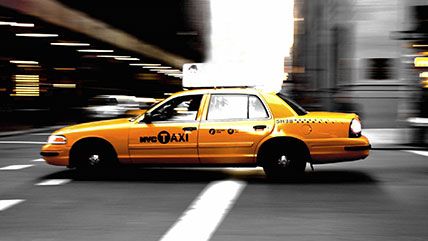It's About To Get Even More Expensive To Get Around NYC
City officials are perfectly willing to throw commuters under the bus

In December 2018, New York's Taxi and Limousine Commission (TLC) imposed a minimum wage on drivers working with services like Lyft and Uber. The new rules set a formula for driver compensation that raises the typical gross wage to $27.86 per hour, which the commission says works out to $17 per hour of take-home pay after expenses.
The wage hike comes just a few short months after the New York City Council passed a law freezing the number of ride-share drivers allowed on city streets. The same law gives the TLC power to impose an even lower cap in the years to come.
Proponents of the new regulations say they are needed to counter declining pay for the city's traditional taxicab drivers and to address traffic congestion. Higher costs will help drivers, they explain, and push more people back onto public transit, where they belong.
These critics have a point. The popularity and affordability of Uber and Lyft have reduced demand for taxis, along with taxi drivers' income. And although the impact on traffic is less clear, the addition of roughly 100,000 ride-share vehicles on New York City streets has coincided with falling transit ridership and rising congestion.
But what critics of ride-sharing don't understand is that these services have been disruptive precisely because they are meeting a need that New York City's incumbent transit options can't or won't.
The city's cartelized taxi industry has long kept driver pay high by keeping the number of cabs low. Such caps allow those lucky enough or rich enough to secure a taxi medallion—which is required if you want to drive a cab in the city—to charge higher fares.
Meanwhile, those too poor for a cab were stuck with the government-funded, publicly operated buses and trains that often left outer borough residents with few transportation options at all. And that was before the city's mass transit system really started to fall apart.
Since 2015, ridership on New York's subway has been dropping precipitously as long-deferred maintenance has led to declining on-time rates, overcrowded train cars, and, on occasion, sewage pouring from the ceiling.
New York City's stabs at regulating ride-sharing services have little to do with making travel easier for city dwellers and much to do with shoring up demand for government-operated transit services. And for that, city officials are perfectly willing to throw commuters under the bus.
This article originally appeared in print under the headline "It's About To Get Even More Expensive To Get Around NYC."
Rent Free is a weekly newsletter from Christian Britschgi on urbanism and the fight for less regulation, more housing, more property rights, and more freedom in America's cities.


Show Comments (42)